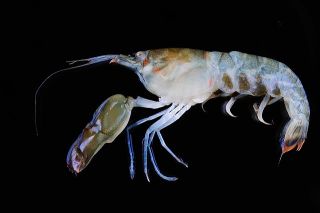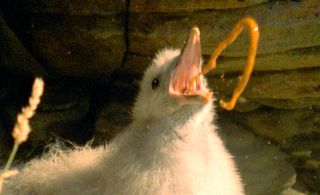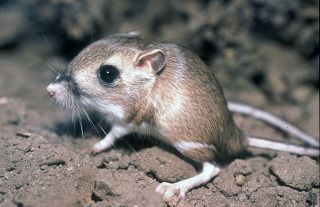Animal Behavior
Animal Behavior May Hold the Key to Ukrainian Victory
Successful “underdog” prey animals show how to beat superior opponents.
Posted April 6, 2023 Reviewed by Kaja Perina
Key points
- Russian history suggests Russia will persist in Ukraine for many years, regardless of horrific losses.
- Thus, Ukraine will need novel strategies to persuade Russia to leave sooner rather than later.
- The survival strategies of underdog prey animals are a rich source of novel ideas for overcoming superior adversaries.
Despite successes on the battlefield, Ukraine faces long odds in its struggle against Russia. Ukraine’s biggest challenge is not Russian military might, but Russian psychology.
Historians remind us that Russian culture tolerates tremendous, prolonged suffering provided that the goal of that suffering is perceived to be worthy, as it was in the titanic struggle against the Nazis in World War II. As a result, experts on Russia predict that, despite heavy losses, Russia will continue its war of attrition for years, if necessary.
Thus, Ukraine is not only an underdog, but an underdog facing an incredibly motivated, patient foe.
But just as history predicts that Russia won’t quit anytime soon, Afghanistan did manage to rid themselves of Russian occupation in the late 80s after sapping the Russians' will to fight with a decade-long insurgency. Other successful underdogs include American colonists’ victory over the British and the North Vietnamese ridding themselves of both French and American forces.
Reports from the battlefield suggest that Ukraine has studied such previous underdog victories and applied the lessons effectively.
But, to overcome deeply entrenched Russian psychology—and get Russia to leave sooner rather than later--Ukraine will need to do more than copy earlier underdogs. It will need potent, entirely novel approaches.
Prey animal behavior suggests novel approaches
Human underdog successes that Ukraine can draw upon go back thousands of years, but underdog prey animals have evolved effective survival strategies that span billions of years.
Can Ukraine apply entirely new tactics and strategies by studying the long, incredibly rich history of highly successful “underdog” prey animals?
As a former Defense Intelligence official and neuroscientist studying prey/predator adaptations, I believe that the answer is “yes.” And I’m not talking about the obvious prey strategies of camouflage, cover, concealment, diversion, deception, decoy, and mimicry that armies everywhere already employ.
I’m talking about application of prey animal behaviors and adaptations that are little known outside of zoology or ethology, and that, to my knowledge, have never been copied in human warfare.
The ideas below will sound very weird, but military history shows that weird ideas—like Hannibal marching elephants over the Alps to attack the Romans---can work precisely because they are so strange the enemy never sees them coming.

What if, for instance, Ukraine repelled Russian artillery attacks by copying the pistol shrimp, which snaps one grotesquely oversized claw in order to produce violent shockwaves that disable would-be predators. Ukraine might mimic pistol shrimp by aiming focused, ultrashort, high peak power radio frequency “shock waves” at incoming Russian artillery shells, blowing the shells up before they hit their target, or better still, igniting Russian ammunition stores behind enemy lines.
This hasn’t been done before, but electromagnetic physics dictates that long metal objects such as artillery shells can be made to strongly resonate at certain radio frequencies, generating strong electric currents which might ignite the artillery shells shortly before they hit (think wine glass exploding when exposed to the right note). This idea for proactive defense is also similar to the behavior of South American electric eels who jump out of the water when predators approach from above, placing their shock-generating chins on the terrestrial predators to preemptively stun the would-be attackers.
Then there are African herbivores that avoid lions and cheetahs by partnering with Oxpecker birds. The Oxpeckers eat disease-carrying parasites off the mammals, but, with superior high-frequency hearing and eyesight, also alert the herbivore hosts to the distant approach of predators.
_on_impala_(Aepyceros_melampus)Charles_Sharp%20CC4.jpg?itok=9rYOYisr)
Today, Ukraine is using artificial birds (reconnaissance drones) to warn of enemy approaches, but the Russian army is getting good at shooting those down. Ukraine might avoid such losses if they—like African herbivores-- used real, as opposed to artificial birds for reconnaissance. Widely available ultra-miniature cameras, recorders, and transmitters (from mobile devices) could be strapped to trained birds or homing pigeons, who could then “naturally” surveil a suspect area without calling attention to themselves.
OK, so these ideas are something of a stretch. But hang on, because here are perhaps even stranger ideas stolen from successful prey animals:
Sticky Goo: Both Hagfish and Fulmar bird chicks shoot sticky goo at approaching predators, clogging their mouths, obscuring their vision, and sometimes impeding their motion. Ukraine has used mud (from artificial flooding) to slow Russian advances, but could they also cover a battlefield with (nontoxic) synthetic goo to gum up the tracks and wheels of advancing Russian armored vehicles and bog down Russian infantry? The marvels of modern chemistry coupled with precision munition delivery could hold the answer.


Sand and Grit: Kangaroo rats, instead of running from snakes that prey on them, often turn their backs on their attackers and kick sand in their faces, discouraging further pursuit. As with slime that is precisely delivered by artillery or rockets, prodigious amounts of dust and grit could be thrown up in front of advancing Russian armor and transport that would be sucked into air intakes overheating and disabling Russian engines.
Random scattering. Armies such Ukraine’s like to retreat in orderly fashion if forced to abandon their positions. But some successful prey animals, such as Impalas, do the opposite of orderly retreating, scattering quickly in random directions, confusing, distracting, and sometimes discouraging pursuit.

Stotting: When Sprinboks sense the presence of a predator, sometimes they don’t run at all but engage in stotting, a kind of jumping and cavorting that signals to predators that pursuit and capture of such incredibly quick, agile prey would be pointless. An equivalent Ukrainian tactic on uneven terrain would be to attack their enemy’s flank with dirt-bike (e.g. Motocross) mounted troops armed with small antiarmor weapons, then dart quickly about the battlefield with far more agility than Russian pursuers.
One last crucial lesson from nature
These, or other strange ideas from prey/predator biology might help underdog Ukraine prevail, but some concepts might fail because every ecosystem is unique, and what works in one environment is not guaranteed to work in another.
However, one of evolution’s strategies for survival of overmatched prey animals, which I am certain would help Ukraine, is to constantly adapt and change, and never assume that any new, successful defense will remain successful for long. Whatever clever, weird idea that the Ukrainians adopt, the Russians will eventually figure out and counter.
So the key to success for Ukraine will not only be to mine animal biology (and other sources) for fresh ideas, but to never stop looking for inspiration from more than 2 million living animal species—each of whom has evolved their own anti-predator strategy.
And, above all, Ukraine must continually adapt faster than the Russians.
The God of war himself, Napoleon Bonaparte, underscored this when he said, "loss of time is irreparable in war…I may lose a battle but I should never lose a minute."
References
https://www.botswana.co.za/Botswana_Wildlife_Behaviour-travel/interspecies-dominance.html
https://www.botswana.co.za/Botswana_Wildlife_Behaviour-travel/protection-of-young.html
https://www.nhm.ac.uk/discover/seven-sneaky-survival-strategies-reef-animals.html
https://www.treehugger.com/bizarre-defense-mechanisms-found-nature-4863…
https://pubs.rsc.org/en/content/articlelanding/2021/sm/d1sm00142f
https://pubs.rsc.org/en/content/articlelanding/2021/sm/d1sm00142f
https://entomologytoday.org/2014/04/11/carnivorous-caterpillars-fool-ants-by-sounding-like-queens/
https://www.quora.com/What-are-the-weirdest-survival-strategies-in-the-animal-kingdom
https://www.treehugger.com/bizarre-defense-mechanisms-found-nature-4863042
https://www.ncbi.nlm.nih.gov/pmc/articles/PMC5863707/.
https://www.nhm.ac.uk/discover/mutualism-examples-of-species-that-work-together.html
Chandler, David, The Campaigns of Napoleon, The Macmillan Company 1966, Toronto Ontario, pg 149




